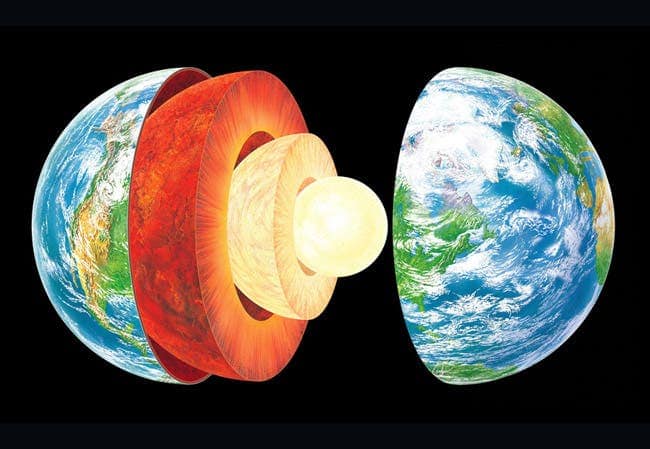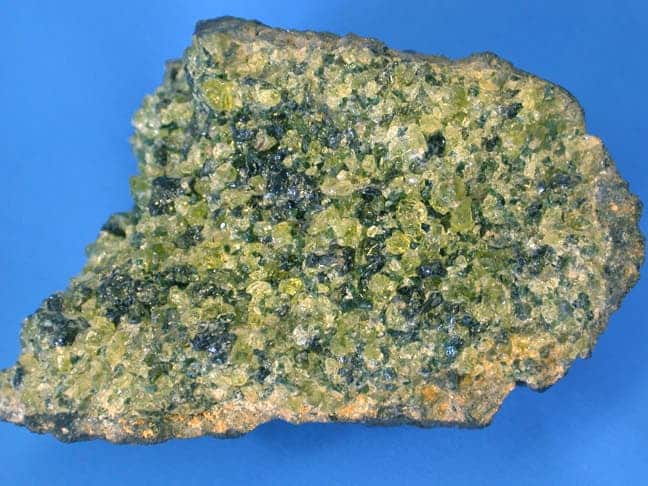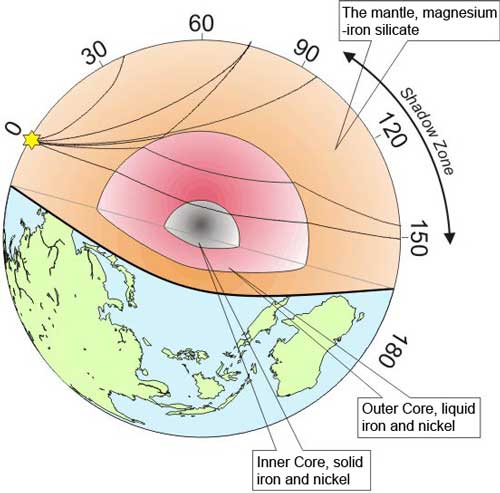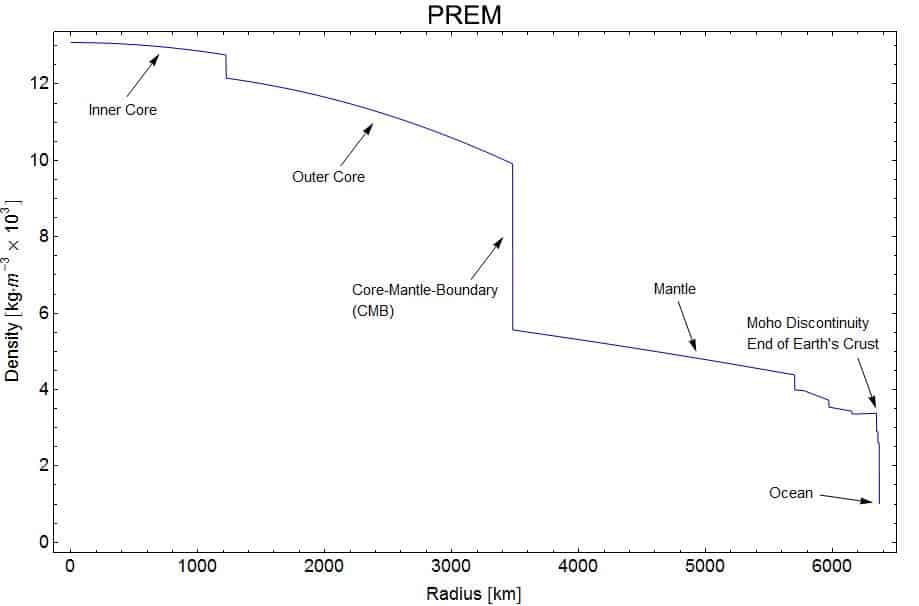Which Wall Has the Thickest Part in the Art
The World tin be divided into four main layers: the solid chaff on the outside, the mantle, the outer core and the inner cadre. Out of them, the mantle is the thickest layer, while the chaff is the thinnest layer.
The Globe'southward construction

The Earth'southward construction tin can be defined in several ways, simply full general, nosotros see the Earth as having a solid crust on the exterior, an inner and an outer core, and the mantle in between. The crust'southward thickness varies between some 10 km and just over 70 km, having an average of well-nigh 40 km. The core has, in total, a radius of 3500 km, merely information technology is by and large viewed as two distinct parts:
- the solid inner core, with a radius of 1220 km
- the viscous outer core, with a radius of 2300 km
The drape's thickness is about 2900 km – and so if you consider the Earth'south core every bit one large thing, and then the core is the "thickest layer" (though has a bigger radius is probably a amend mode of saying it) – but the idea of a separate outer and inner core is generally accepted.
The Mantle – thickness and limerick
The mantle comprises well-nigh 83% of the Earth's book. It is divided into several layers, based on different seismological characteristics (as a matter of fact, much of what we know about the drapery comes from seismological data – more on that later in the commodity). The upper mantle extends from where the chaff ends to well-nigh 670 km. Even though this surface area is regarded as viscous, you can as well consider it as formed from rock – a stone chosen peridotite to be more precise. A peridotite is a dense, fibroid-grained igneous rock, consisting mostly of olivine and pyroxene, 2 minerals only found in igneous rocks.

But it gets even more than complicated. The crust is divided into tectonics plates, and those tectonic plates are actually thicker than the crust itself, encompassing the peak part of the drapery. The crust and that pinnacle office of the mantle (going 00 to 200 kilometers beneath surface, is chosen the asthenosphere. Scientific studies propose that this layer has physical properties that are different from the residue of the upper mantle. Namely, the rocks in this part of the pall are more rigid and breakable because of cooler temperatures and lower pressures.
Below that, there is the lower mantle – ranging from 670 to 2900 kilometers below the Earth'southward surface. This is the expanse with the highest temperatures and biggest pressures, reaching all the way to the outer cadre.
Mantle Trivia: Fifty-fifty though y'all can consider the mantle as molten stone or magma, modern research found that the mantle has between 1 and three times more h2o than all the oceans on Earth combined.
How can nosotros written report the mantle?

Pretty much all the applied geology we practise takes places at the crust. All the stone assay, the drilling… everything we do is done in the chaff. The deepest drill ever is some 12 km below the surface… so so how can we know the mantle?
Every bit I said before, nigh of what nosotros know virtually the mantle comes from seismological studies. When big earthquakes take identify, the waves propagate throughout the Earth, carrying with them information from the layers they pass through – including the mantle. Furthermore, mod simulations in the lab showed how minerals likely behave at those temperatures and pressures, and we also have indirect gravitational and magnetic information, likewise equally studies on magma and crystals constitute on the surface. Simply the bulk of the data comes from seismic assay.

Seismic waves, just like light waves, reflect, refract and diffract when they come across a boundary – that's how we know where the crust ends and where the drape begins, and the aforementioned goes for the pall and the core. The waves likewise acquit differently depending on dissimilar backdrop, such every bit density and temperature.
In the curtain, temperatures range between 500 to 900 °C (932 to ane,652 °F) at the upper boundary with the crust; to over four,000 °C (seven,230 °F) at the boundary with the core. Thanks to the huge temperatures and pressures inside the mantle, the rocks within undergo slow, viscous like transformations in that location is a convective textile circulation in the mantle. How cloth flows towards the surface (because information technology is hotter, and therefore less dense) while cooler material goes down. Many believe that this convection actually is the main driver behind plate tectonics.

Another interesting fact nigh the mantle: Earthquakes at the surface are a result of stick-slip faulting; rocks in the drapery can't fault though, still they sometimes generate similar earthquakes. Information technology's not clear why this happens, merely several mechanisms have been proposed, including aridity, thermal runaway, and mineral phase alter. This is but a reminder of how little we still know about our planet: we've only scratched the surface of the thinnest layer, the crust.
albrittonshase1964.blogspot.com
Source: https://www.zmescience.com/science/geology/thickest-layer-earth-mantle/
0 Response to "Which Wall Has the Thickest Part in the Art"
Publicar un comentario